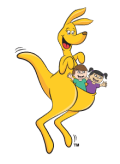Written by Bindy Cummings and Dr Tessa Grigg
In the last few months of each year, hundreds of millions of dollars are spent on Christmas presents for children. It is a good idea to spend some time thinking about the type of toys/experiences you want children to play with and the purpose for which they will be used. Whatever time of the year you are buying gifts, aside from price, you may like to consider the following:
- Toys work better when they are geared to the child’s age level and developmental skills and have long-term play appeal. Ask these questions: Will this toy help in any areas of developmental growth? Does it challenge my child’s ingenuity?
- Poor quality toys that break easily or break down can be dangerous and cause heartache. Ask these questions: Is this toy safe for my child to use? Is this toy durable?
- Some battery-operated toys and dolls have limited play value, although they have instant appeal – particularly if built up by advertisements. Ask this question: Can the toy be used in different ways? Will my child find this toy interesting in a week’s time?
- Good quality toys last a long time. Ask this question: Can this toy be passed on from one child in the family to another?
- Good toys offer new challenges at different ages. Ask this question: As my child grows, will this toy provide a new set of challenges?
Safety Tips for Developmental Toys
Before buying any developmental toys, you need to check that they are safe. Consider the following points:
- Does the toy meet approved safety requirements?
- Is the toy designed for a child the same age as mine?
- Does the toy have any little pieces that might come off and be a choking hazard?
- Is the toy sturdy, or can it be easily broken?
- Will the toy be easy to clean?
After developmental toys are brought home, they should be regularly cleaned. They should also be checked often for damage or defects. Any toys that are showing cracks or broken pieces should be replaced. Most developmental toys are designed to be sturdy in order to survive rough play, however, breakages can still occur.
Under two years of age
Basically, before 18 months, children do not really need any costly toys at all.
Infants will enjoy tracking a mobile, hearing a rattle and feeling and sucking on soft rubber/plastic toys. Simple, two-dimensional, sturdy picture books are also great. Read Developmentally Brilliant Gifts For Babies here.
Christmas wrapping paper that is shiny and crinkly and the cardboard boxes some presents arrive in, are usually far more exciting to your creeper/crawler than anything inside! At this age and stage, babies will generally prefer the pots and pans in the kitchen cupboards or the plastic containers from the bottom drawer! Hollow blocks or boxes, soft toys, floating bath animals, spinning tops, rattles, squeaky play animals with no removable parts, light plastic blocks, large-holed posting boxes, large soft balls and empty containers are examples of toys suitable for the under one year old. As babies begin to walk, they need simply constructed materials because they experiment continually. A variety of toys is desirable but offer only a few at a time.
If you do buy your infant and toddler toys, remember they learn through movement and their senses – so the toys and materials for this age should appeal to the senses and the muscles.
Suggestions for one to two-year-olds include; a toy telephone (or mobile), percussion instruments, miniature garden tools, wagons or trucks, soft play animals, cardboard cartons, a large soft ball, large crayons or chalk and drawing paper, a sandpit with a bucket and spade, a small rocking horse, a push-along cart, boats for the bathtub and well-made picture books.
Two years of age
Two-year-olds are active explorers of their world. They are learning new things about themselves and their world every day. They are still refining large muscle control, so toys for this age group need to be sturdy and stimulating.
Suitable toys for two-year-olds include; large blocks, wooden inlay puzzles (four – seven pieces), large, coloured beads, large soft balls, toy trains, trucks or boats, brush painting materials, clay modelling materials, push and pull toys, ride-on/scoot-along bike, musical instruments for the under-fives, or a musical box.
Three to five years of age
These children are developing fine muscle control while large muscles are continuing to grow. Their imagination is also blossoming, and they love pretend play (holding tea-parties, pretending to be animals, etc.).
Gifts that three to five-year-olds will enjoy playing with include; a toy cart, a magnifying glass, a wading pool, swings, locks and keys skittles, simple throwing games, a paddle with ball attached, a three-wheeled scooter, tricycles, wagons (large enough to hold a child), a bouncing or rocking horse, bean bags, simple rolling games, simple construction kits, an aquarium, water-play materials, a bubble set, musical instruments for the under-fives, model houses with small family, farm and zoo sets, tea-party sets, inlay puzzles (eight to twenty pieces), matching picture games, viewer box with slides, washable, unbreakable dolls, housekeeping equipment, a costume box for ‘dressing up’, hats – including space helmets and fire fighters hats, puppets, blunt-ended scissors, paste, hammers, nails and soft wood.
Dr Tessa Grigg (PhD, Dip Tch Primary and ECE) is an experienced teacher and the Research and Education Manager at GymbaROO-KindyROO.
Bindy Cummings (B.Ed hons) is a teacher, a GymbaROO early childhood neuro-developmental consultant and the co-creator of GymbaROO’s Active Babies Smart Kids series. She has been writing articles for GymbaROO’s First Steps magazine, digital platforms and media for over ten years.
Sources of information: The information above is a compilation of information from GymbaROO parent handouts and the Australian Consumers Association: Choice magazine, Toys2buy.com.

